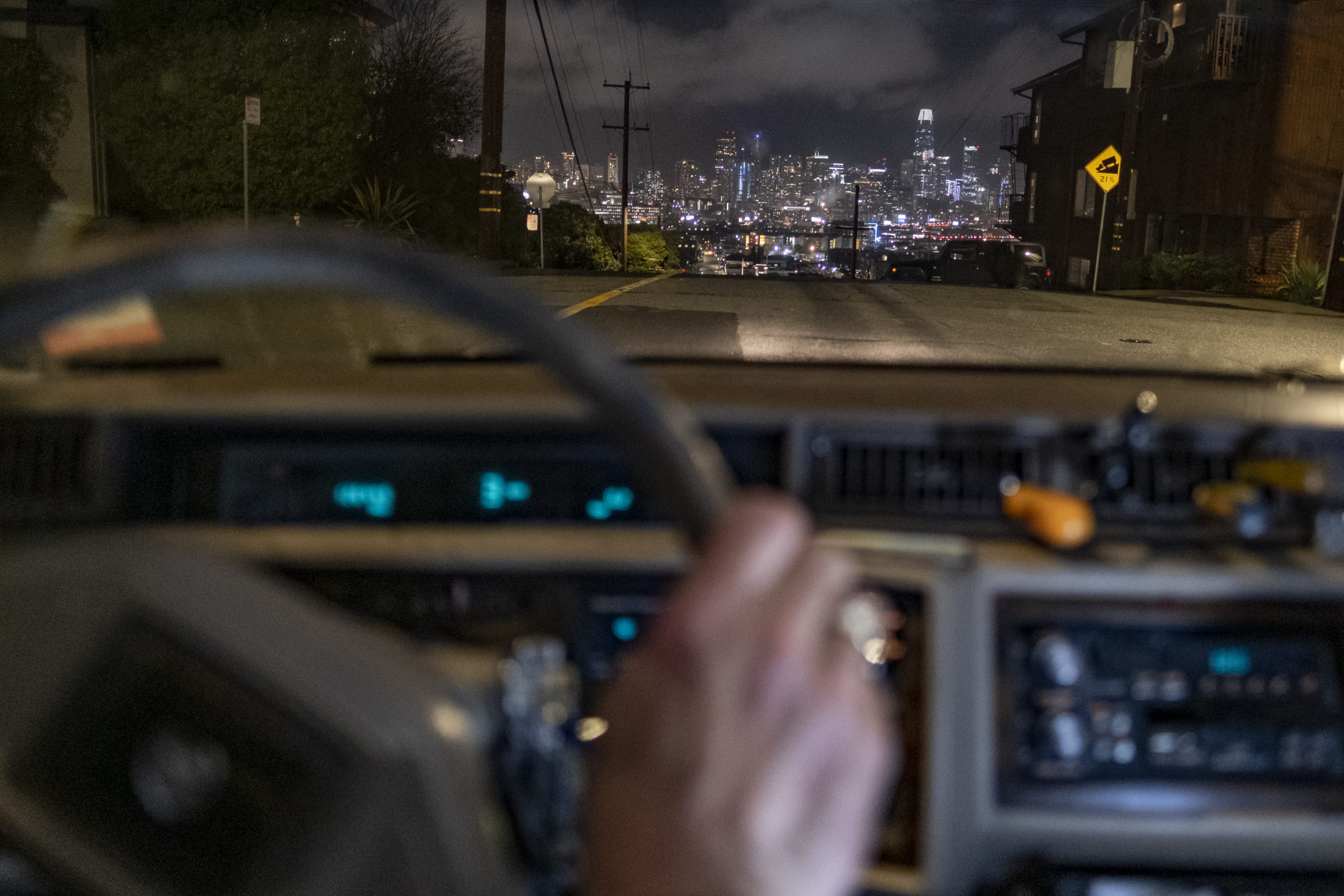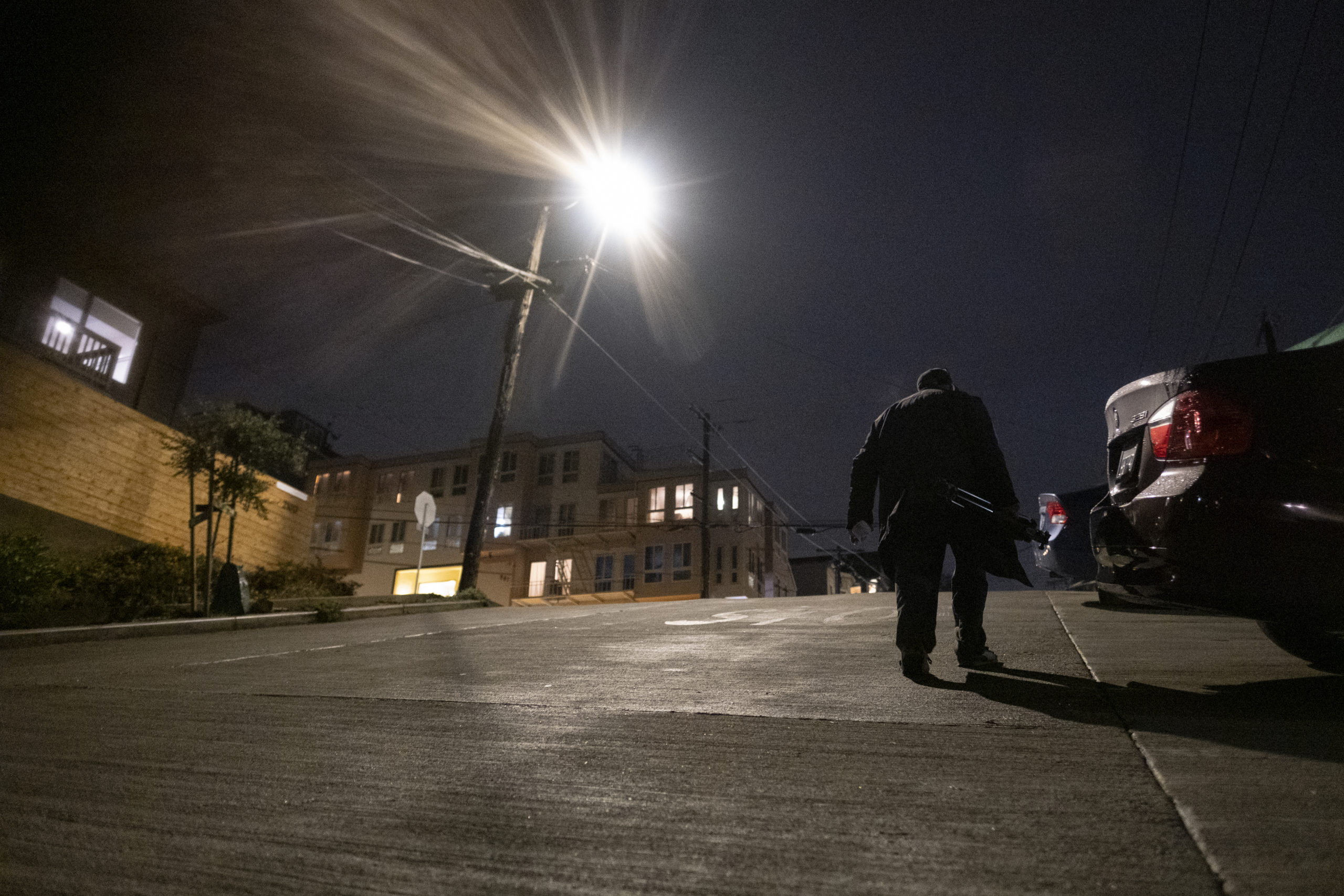Part II of “Driving Home: Surviving the Housing Crisis.” Lee esta historia en español.
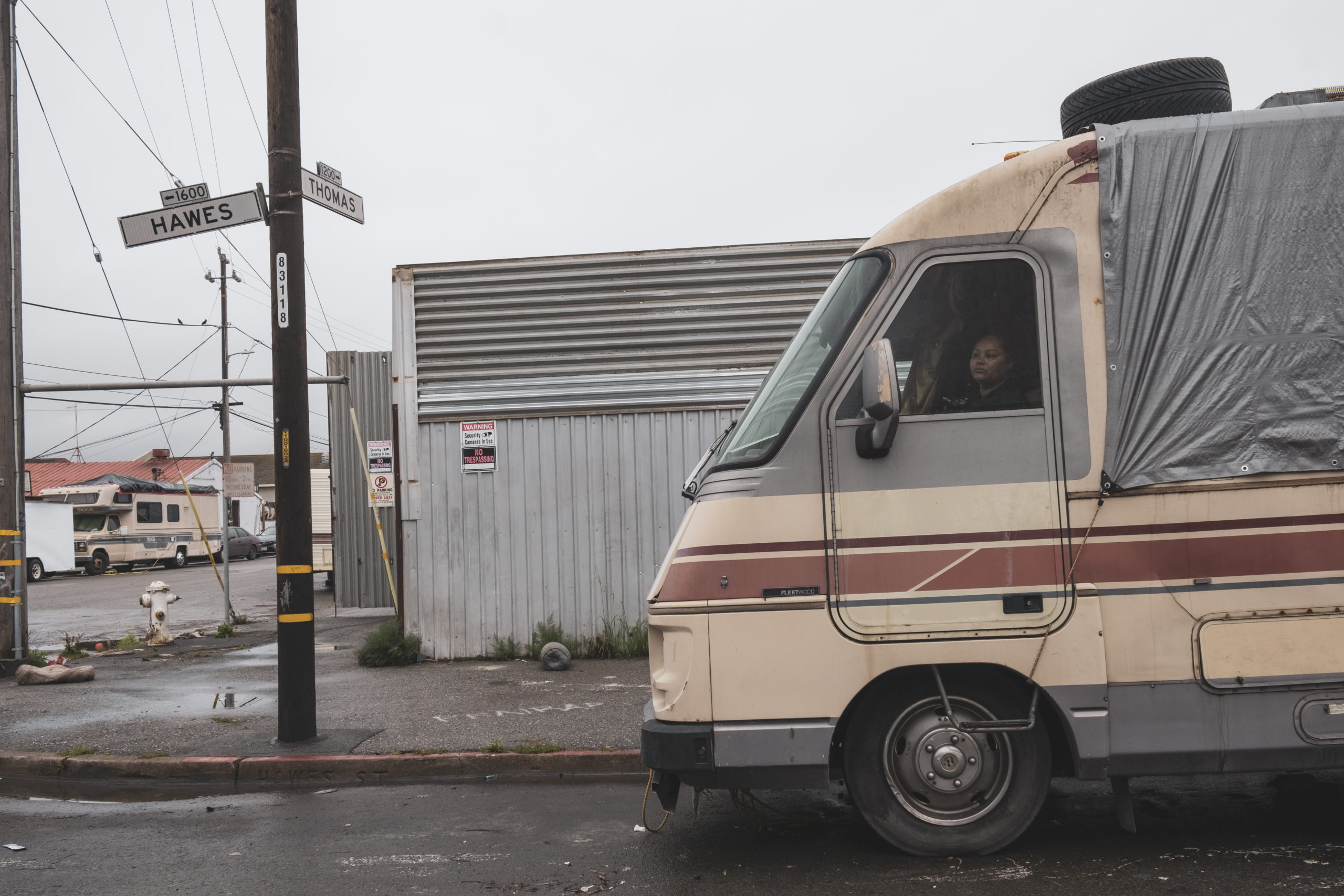
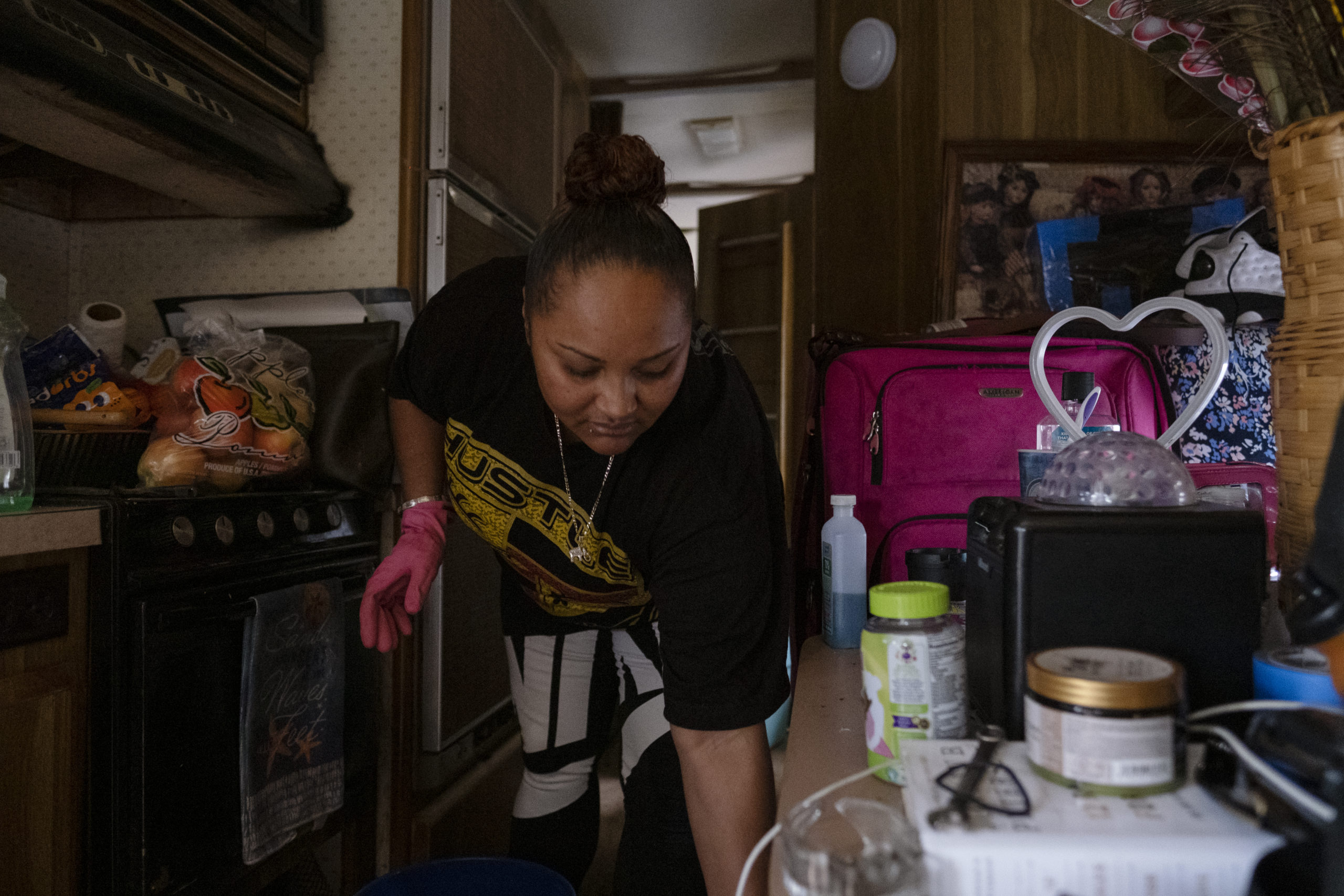
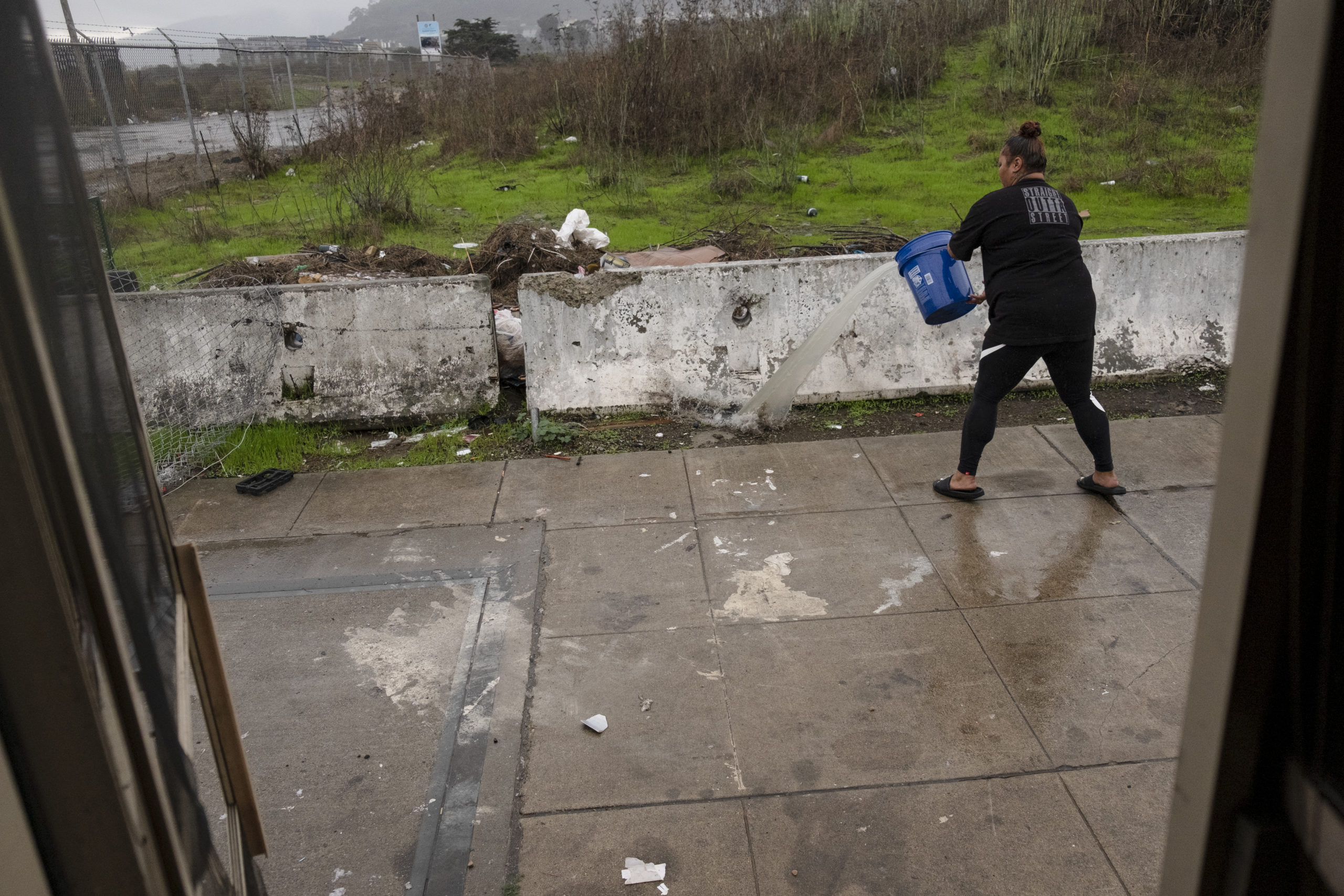
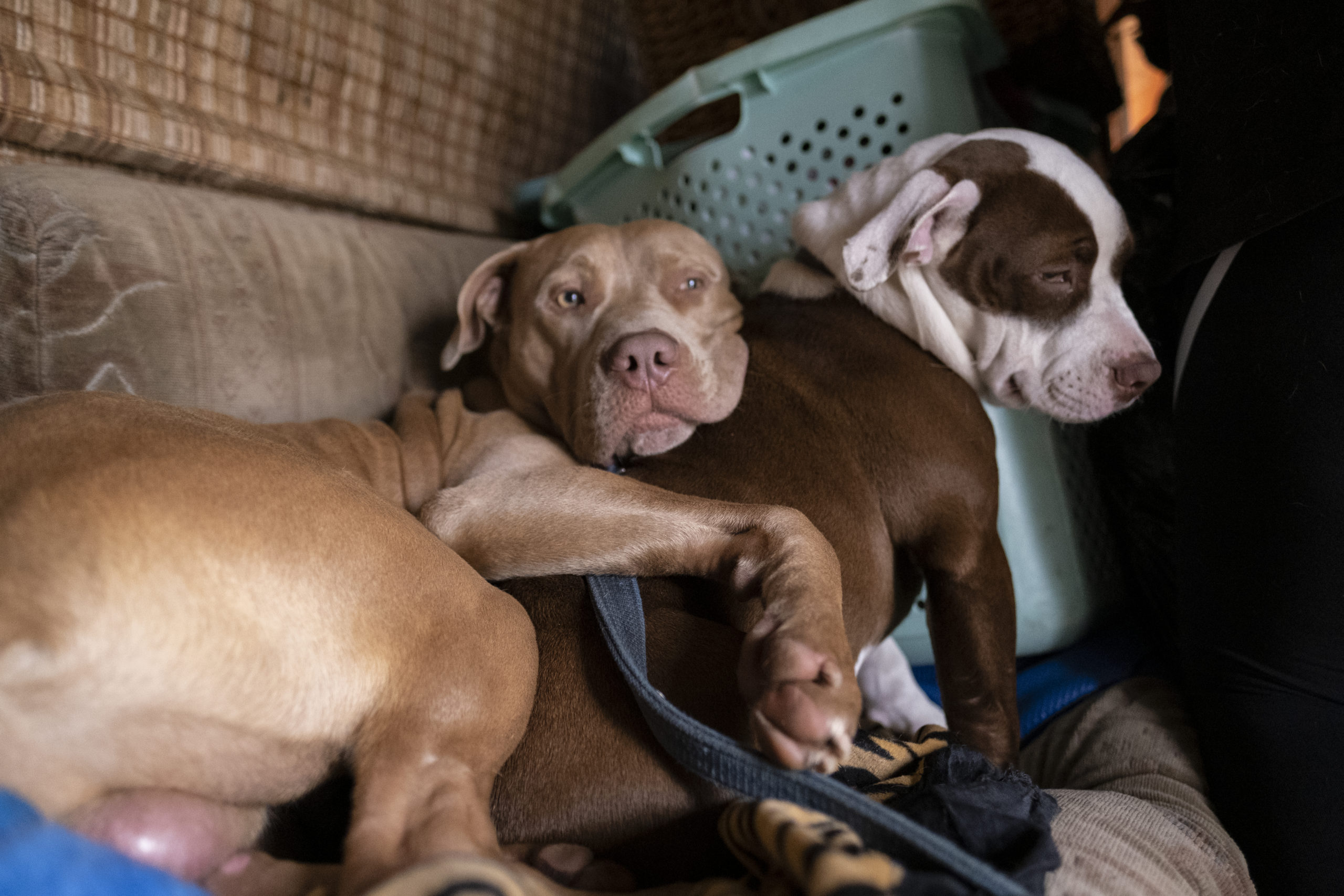
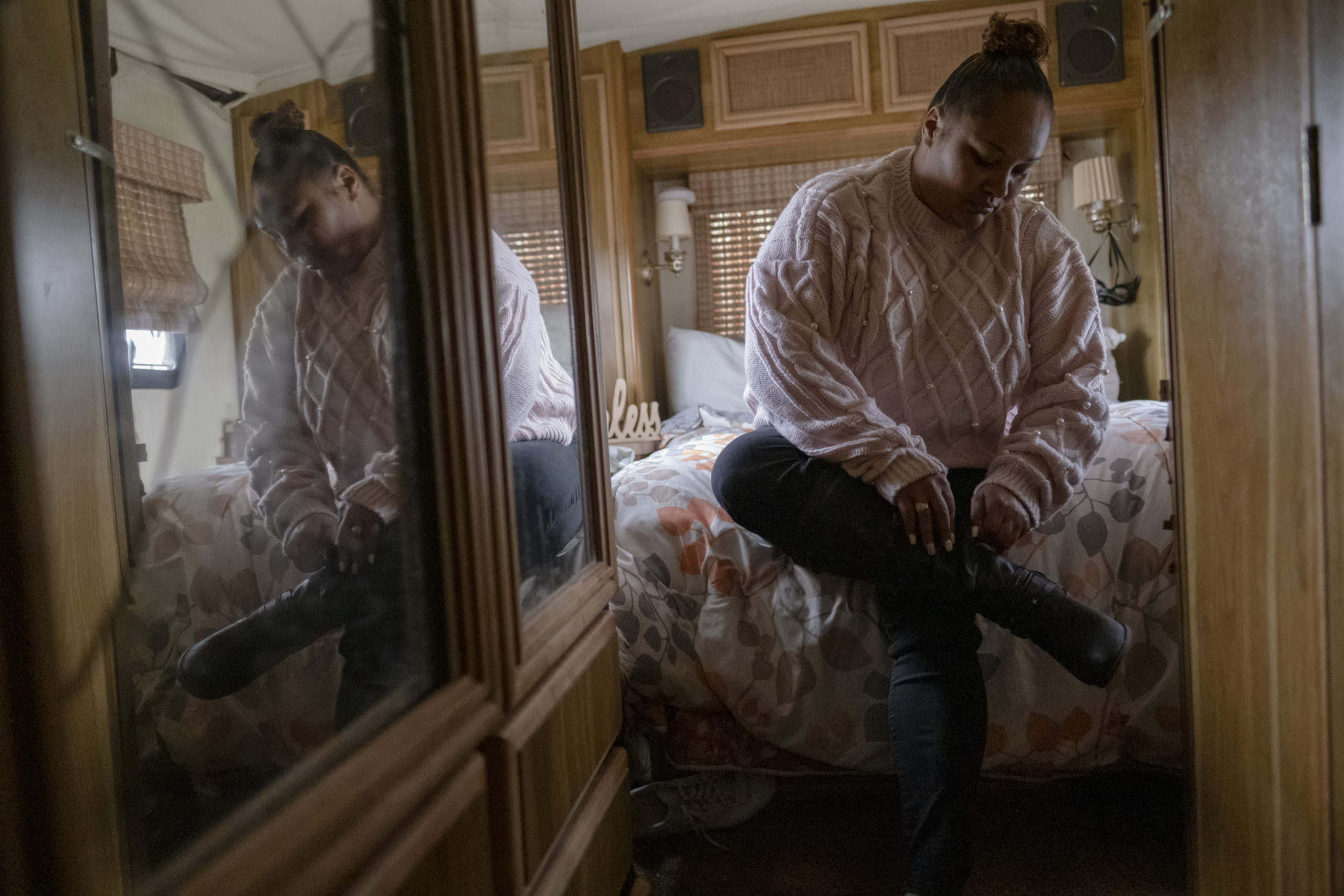
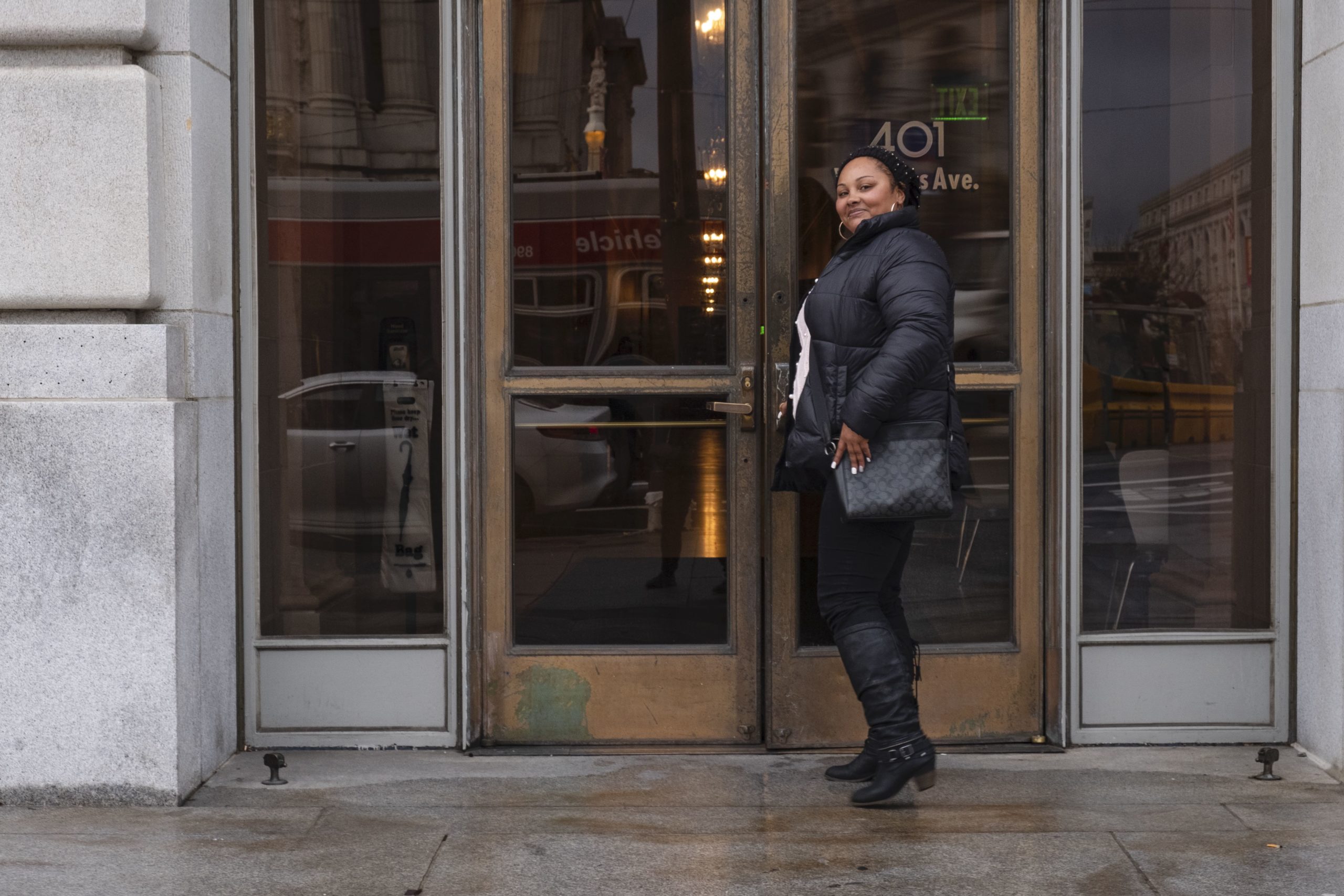
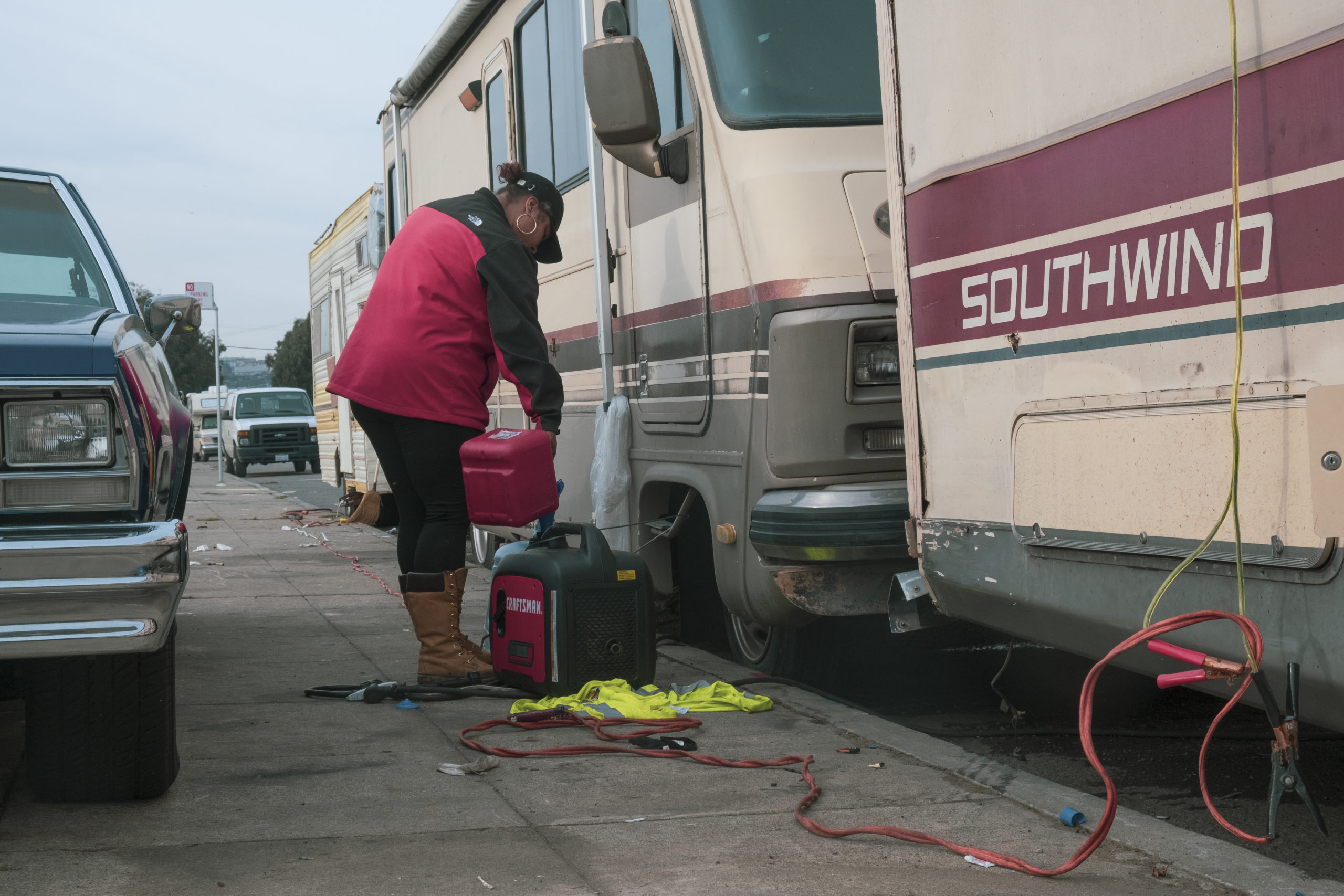
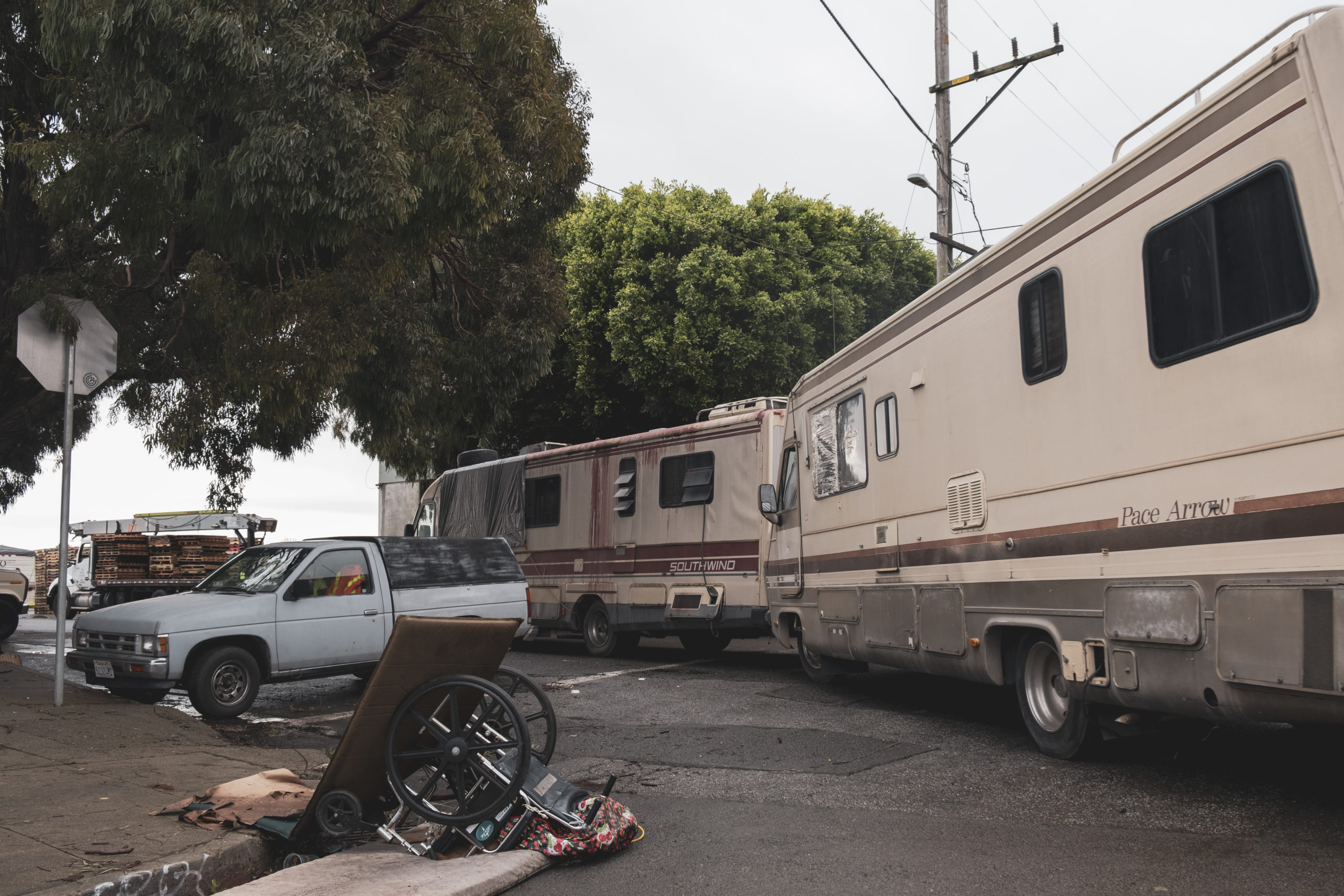
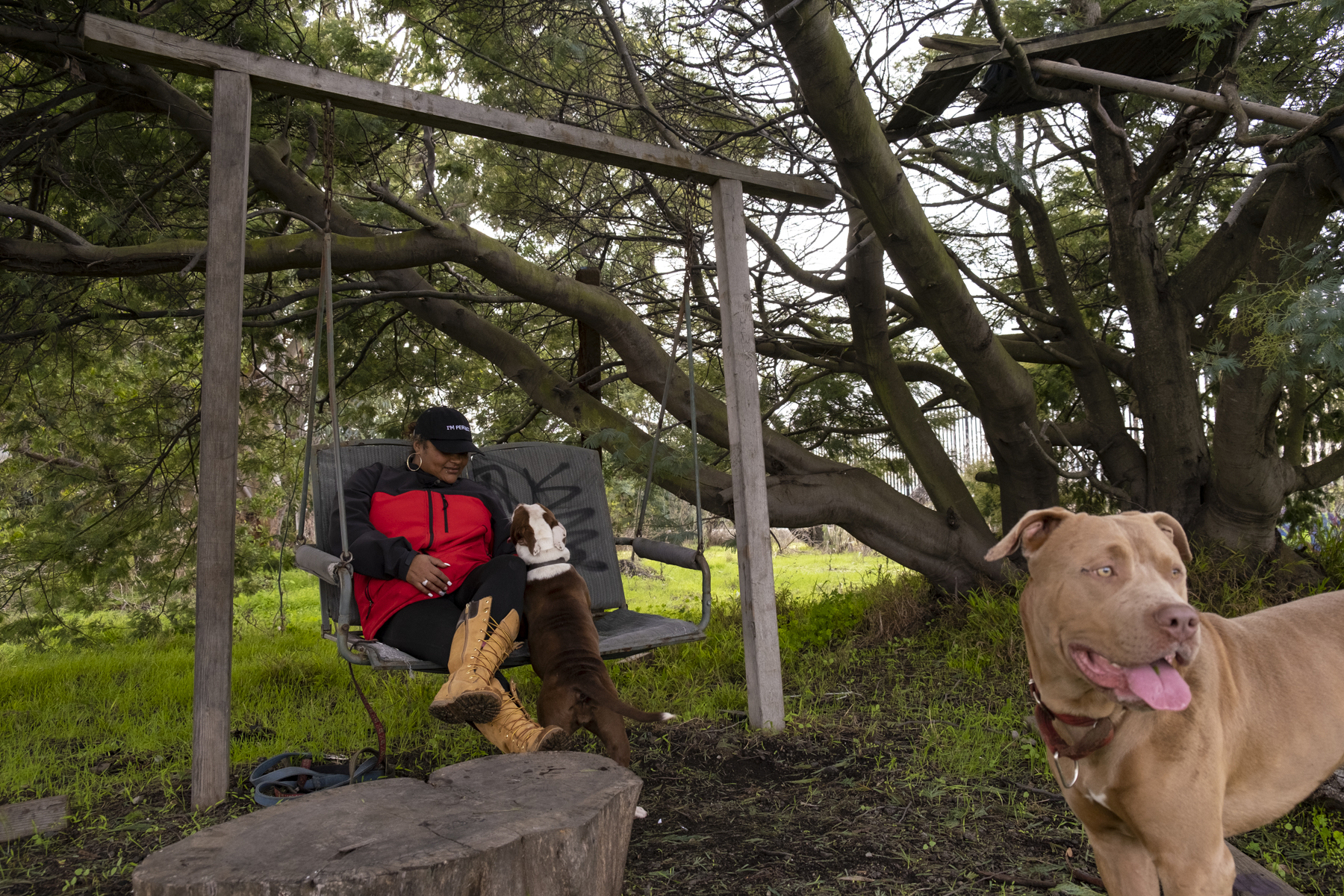
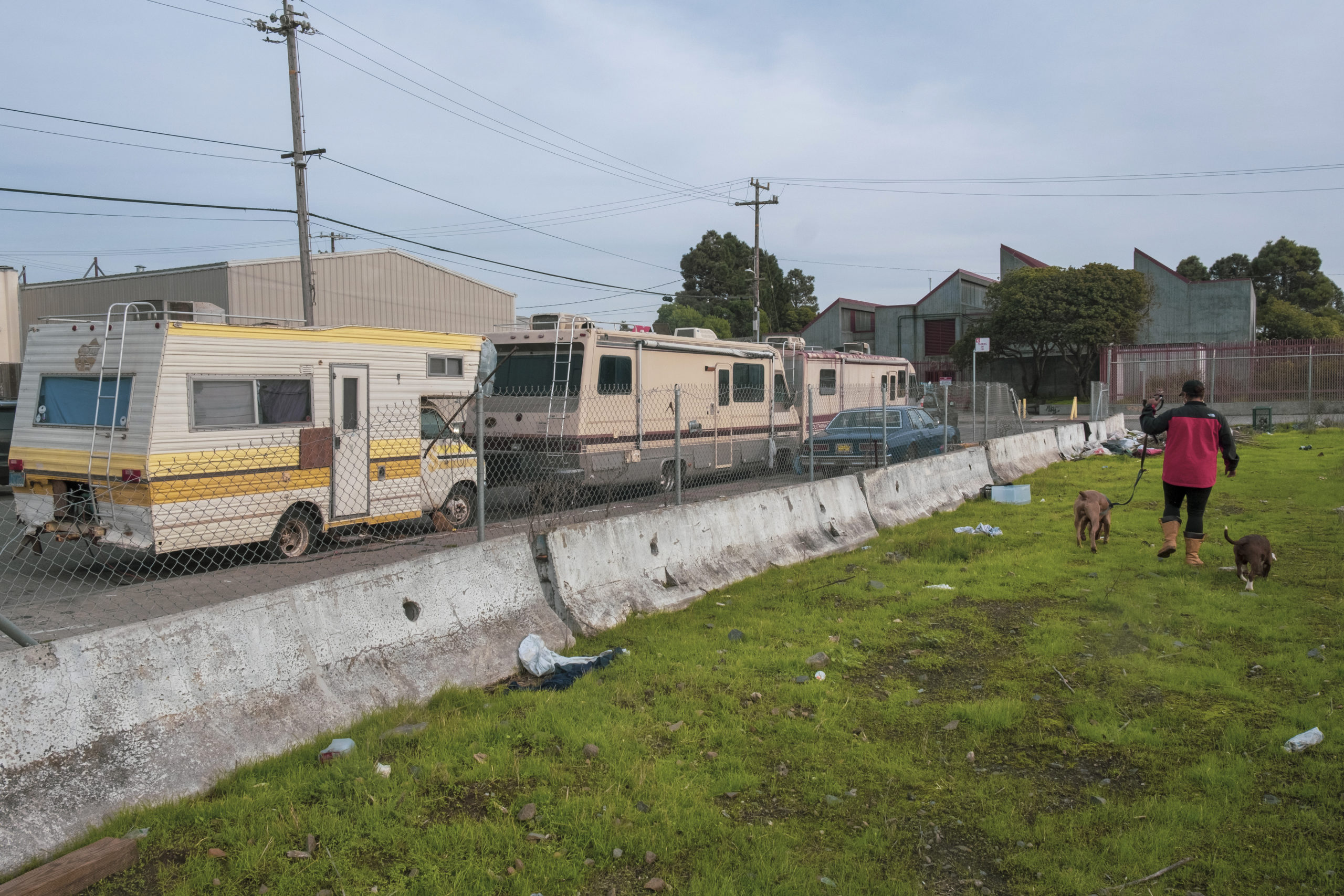
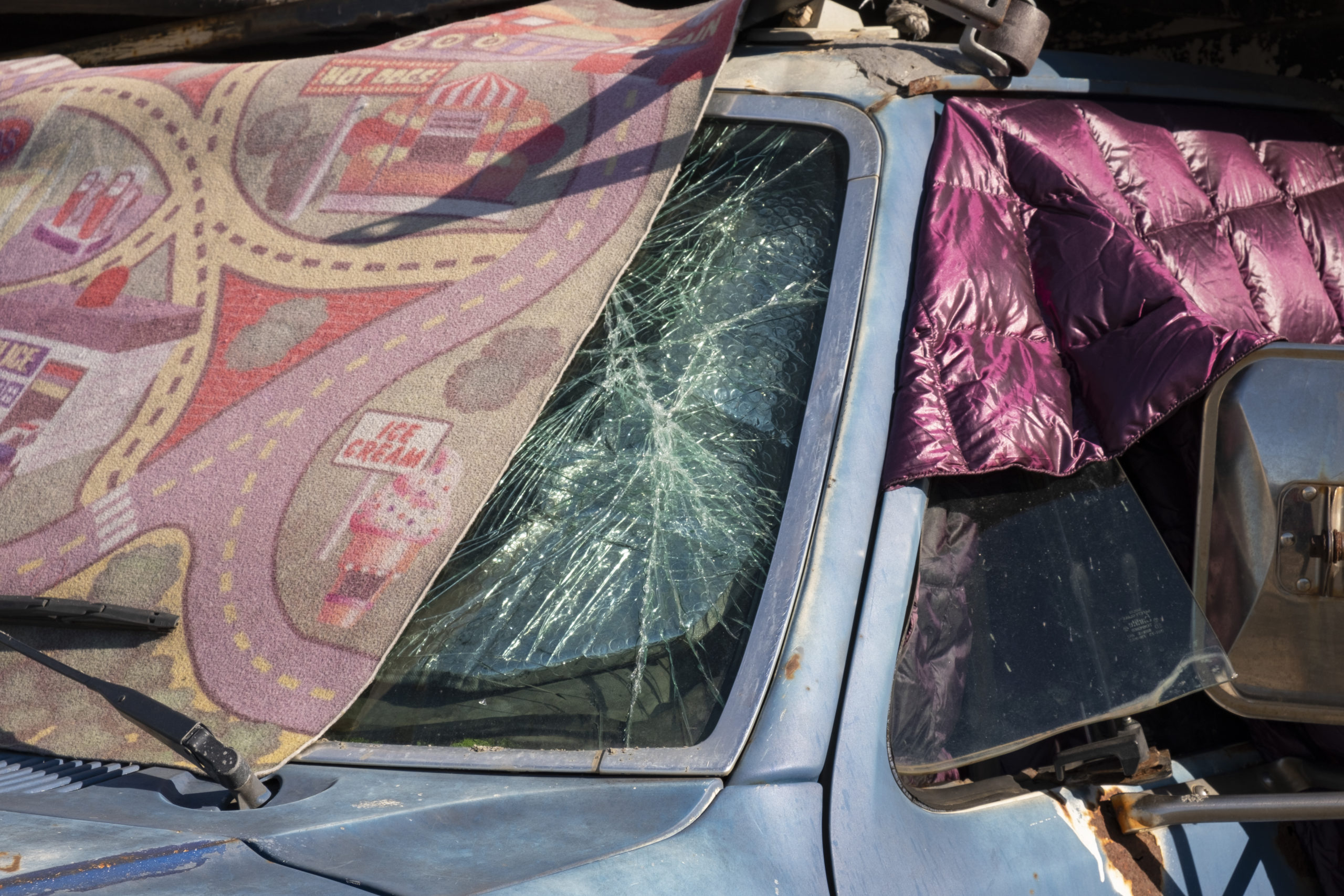
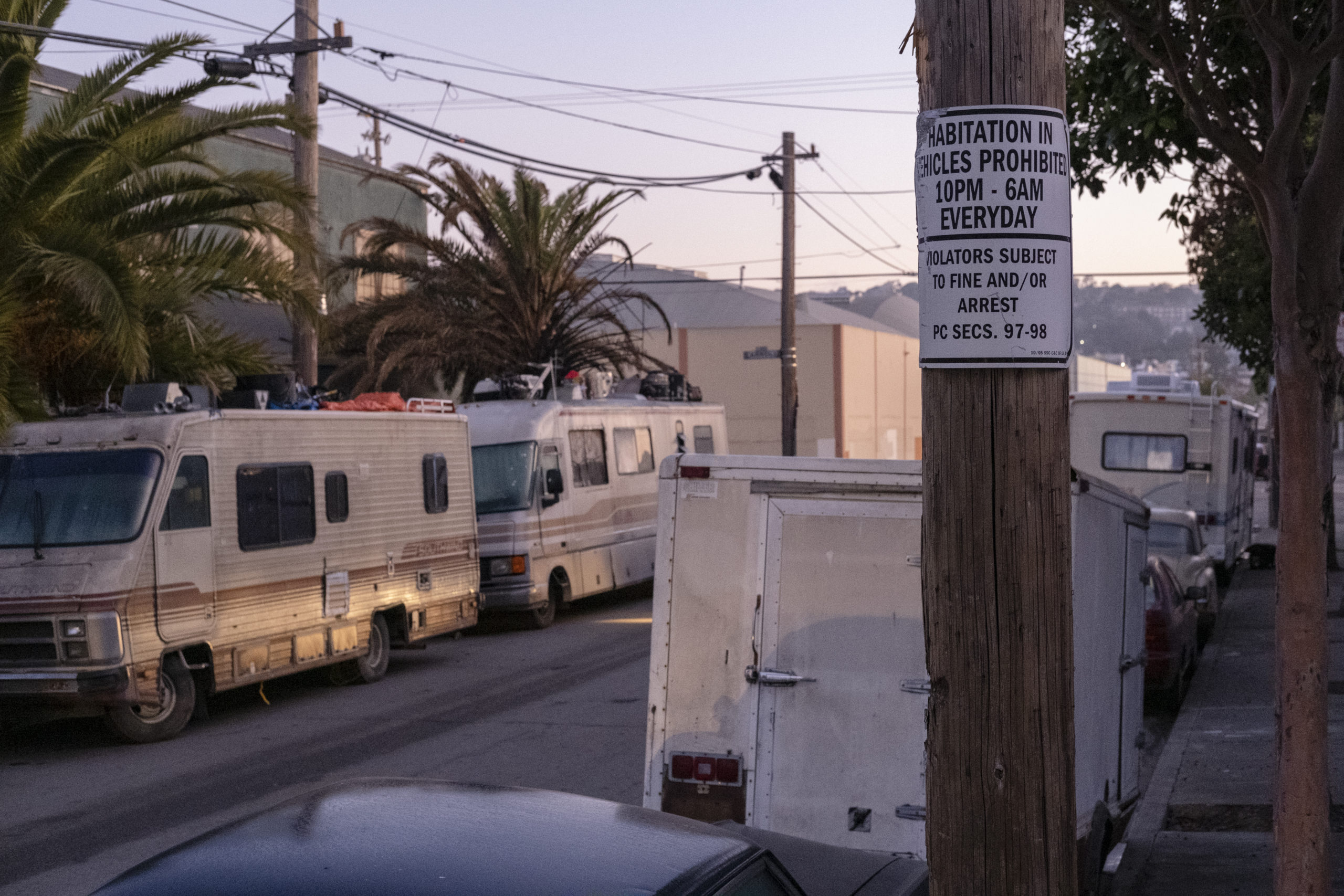
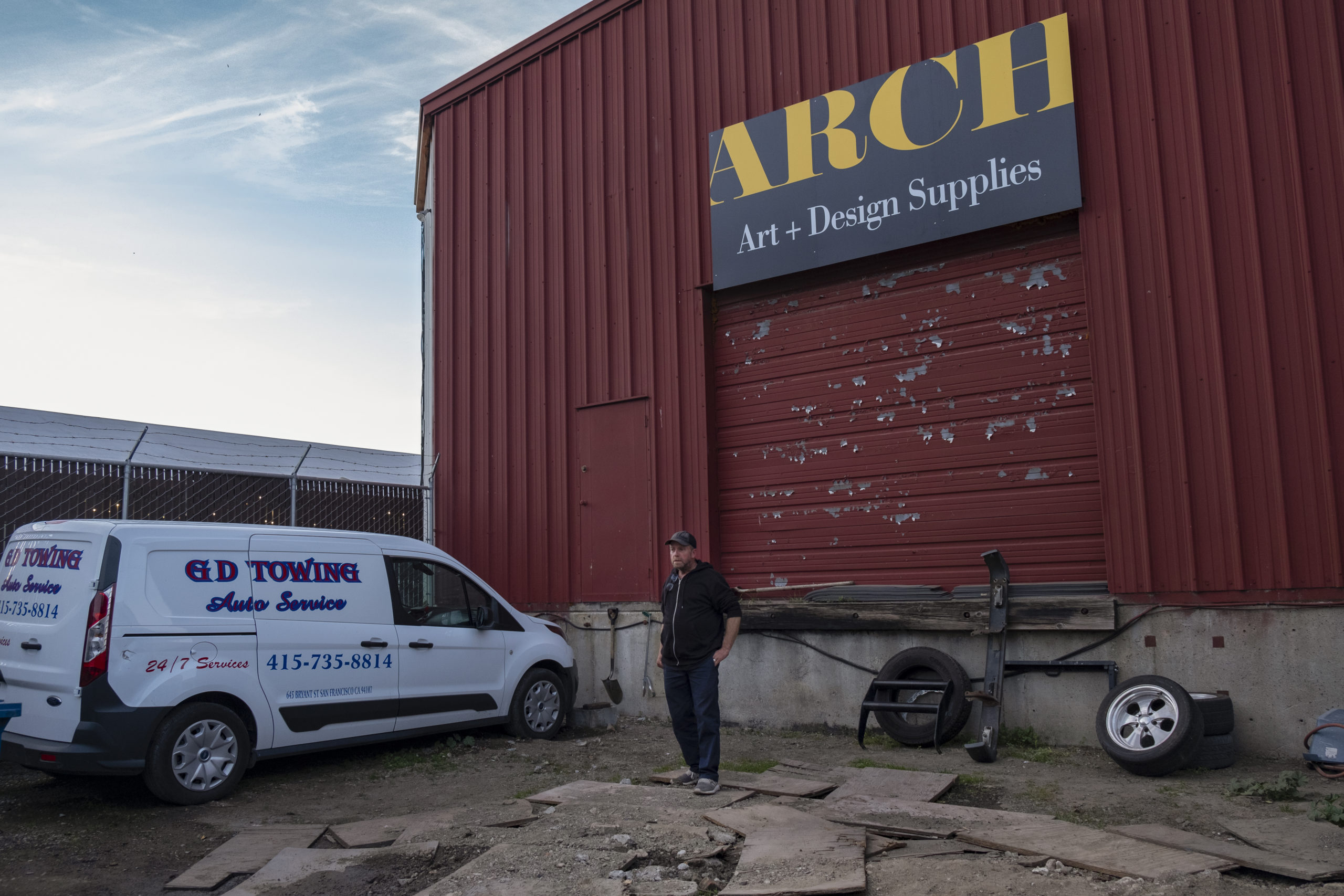
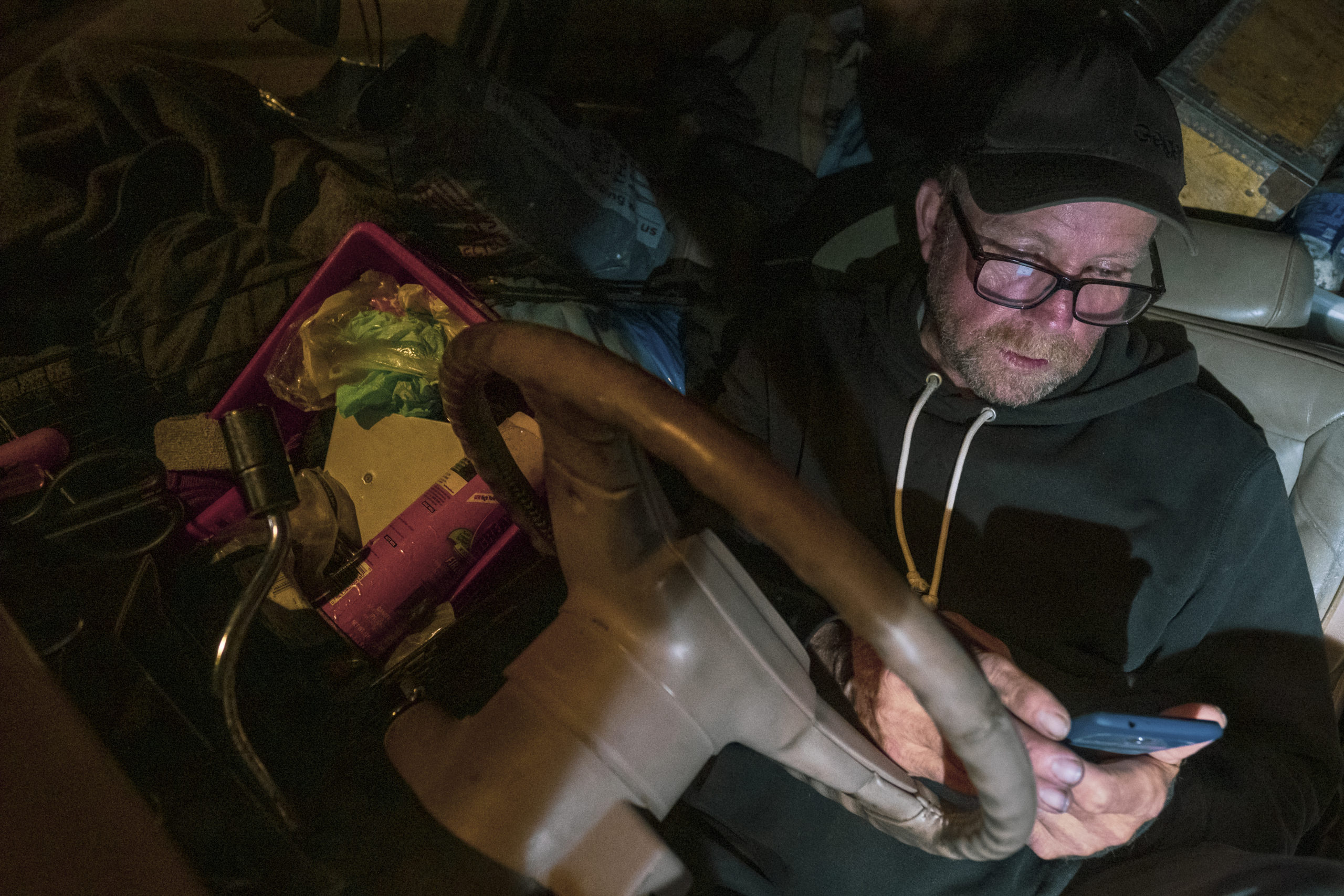

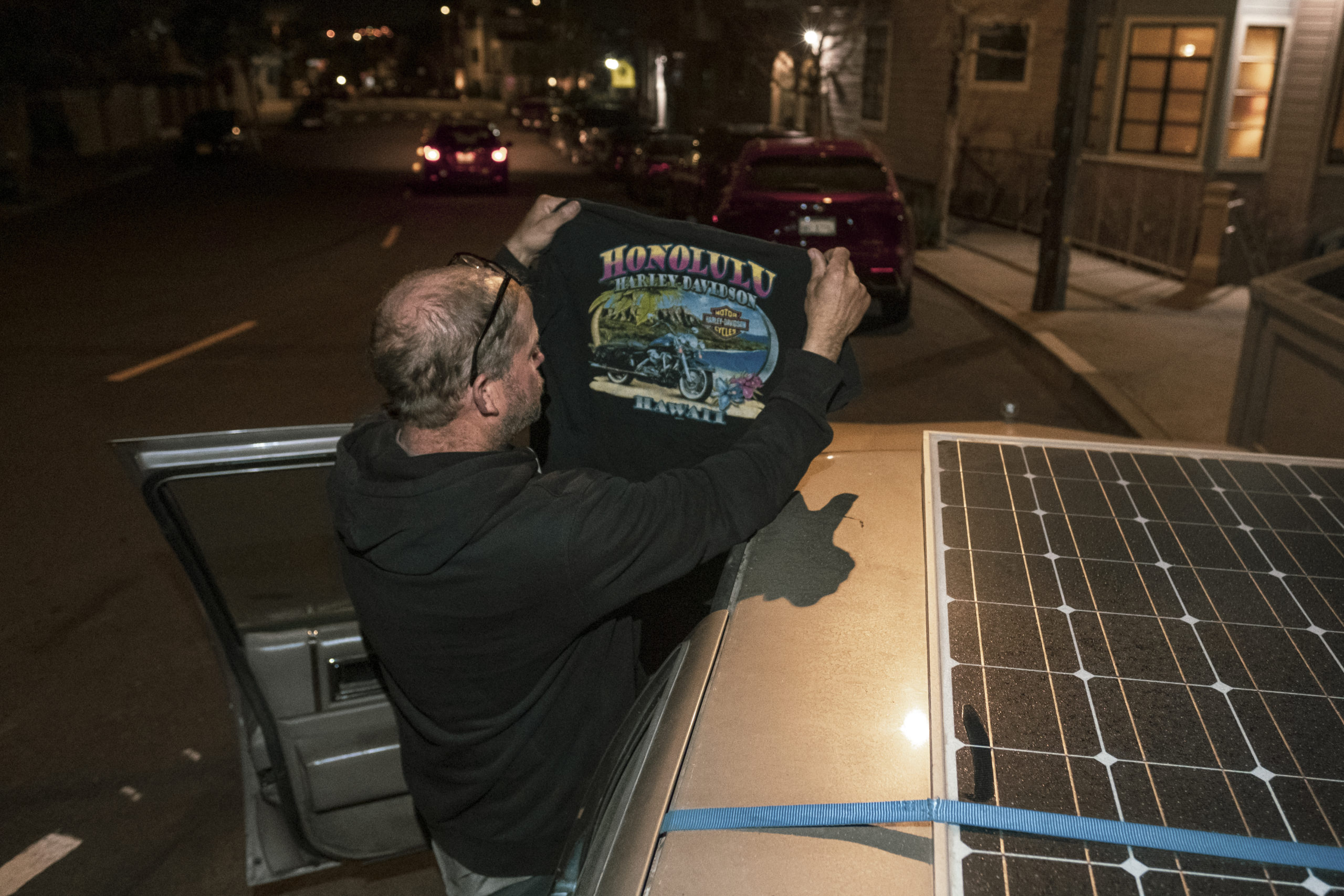
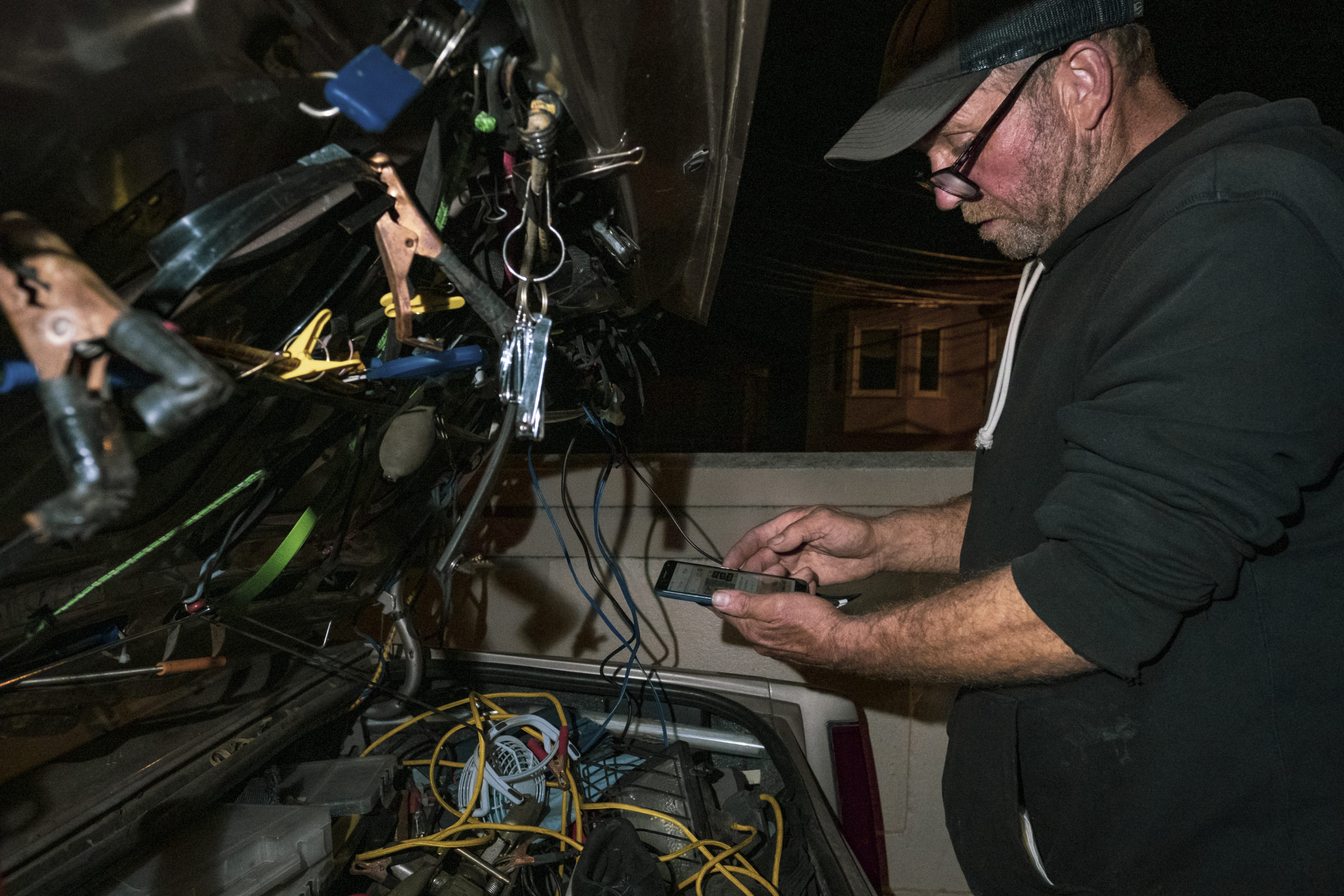
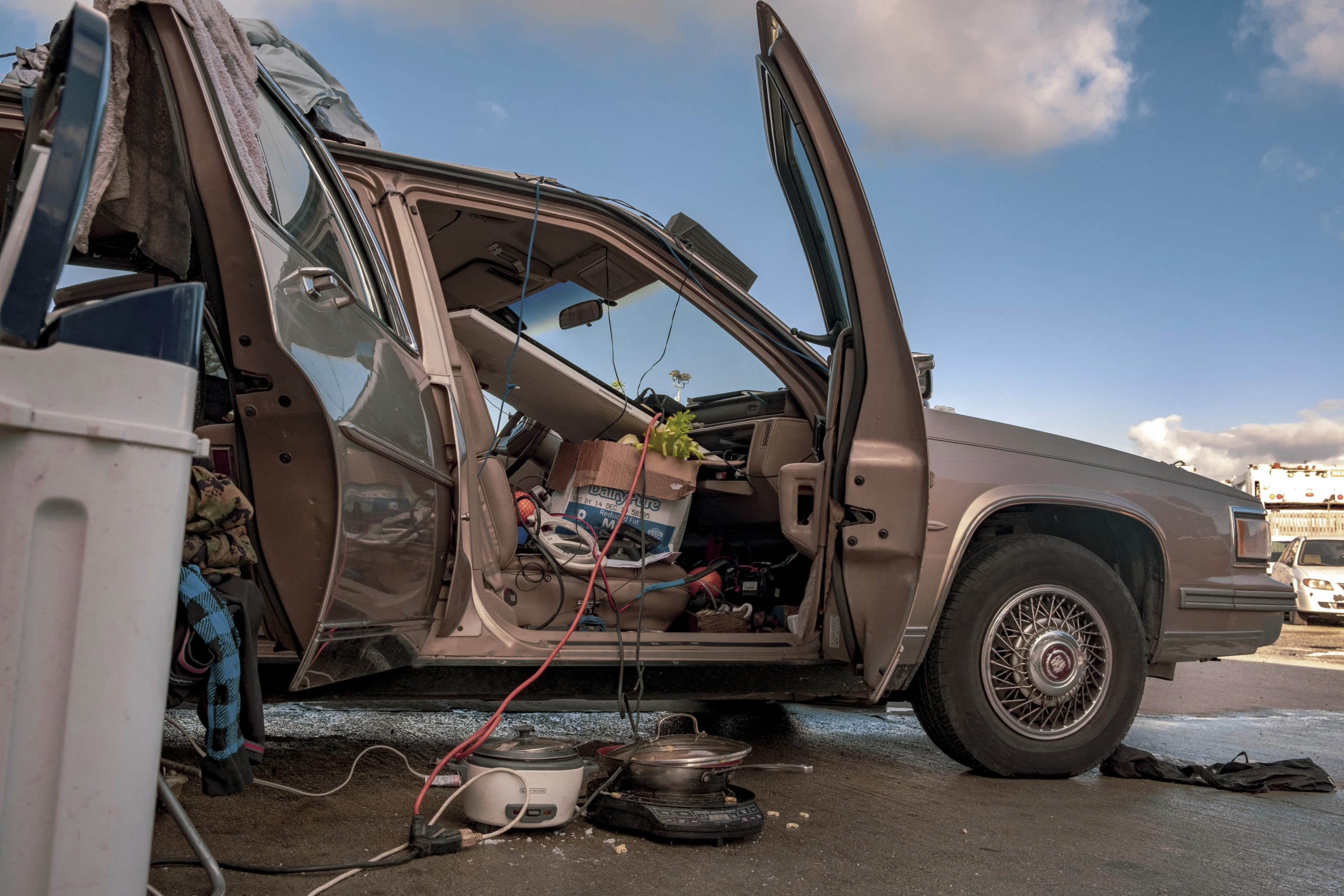
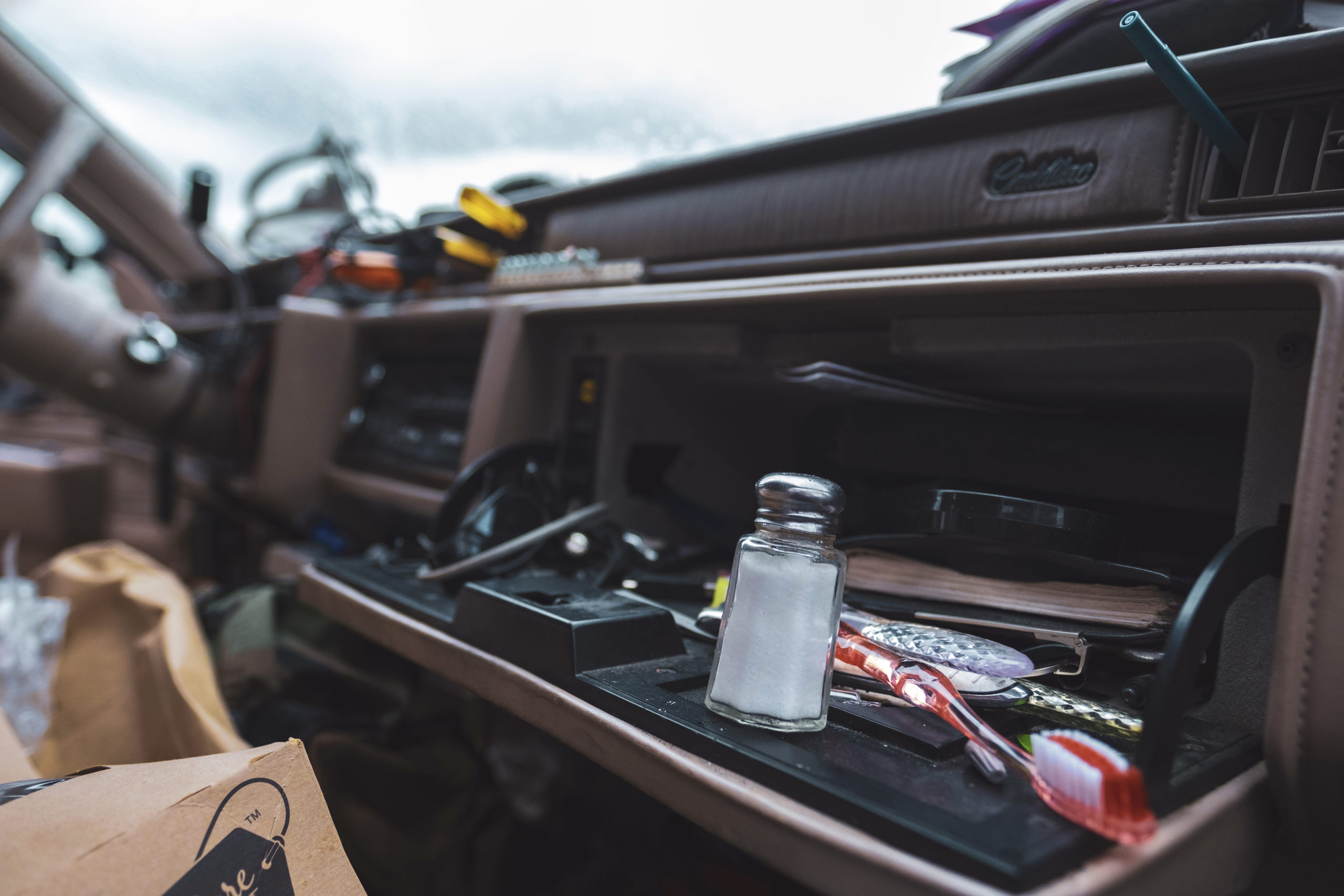

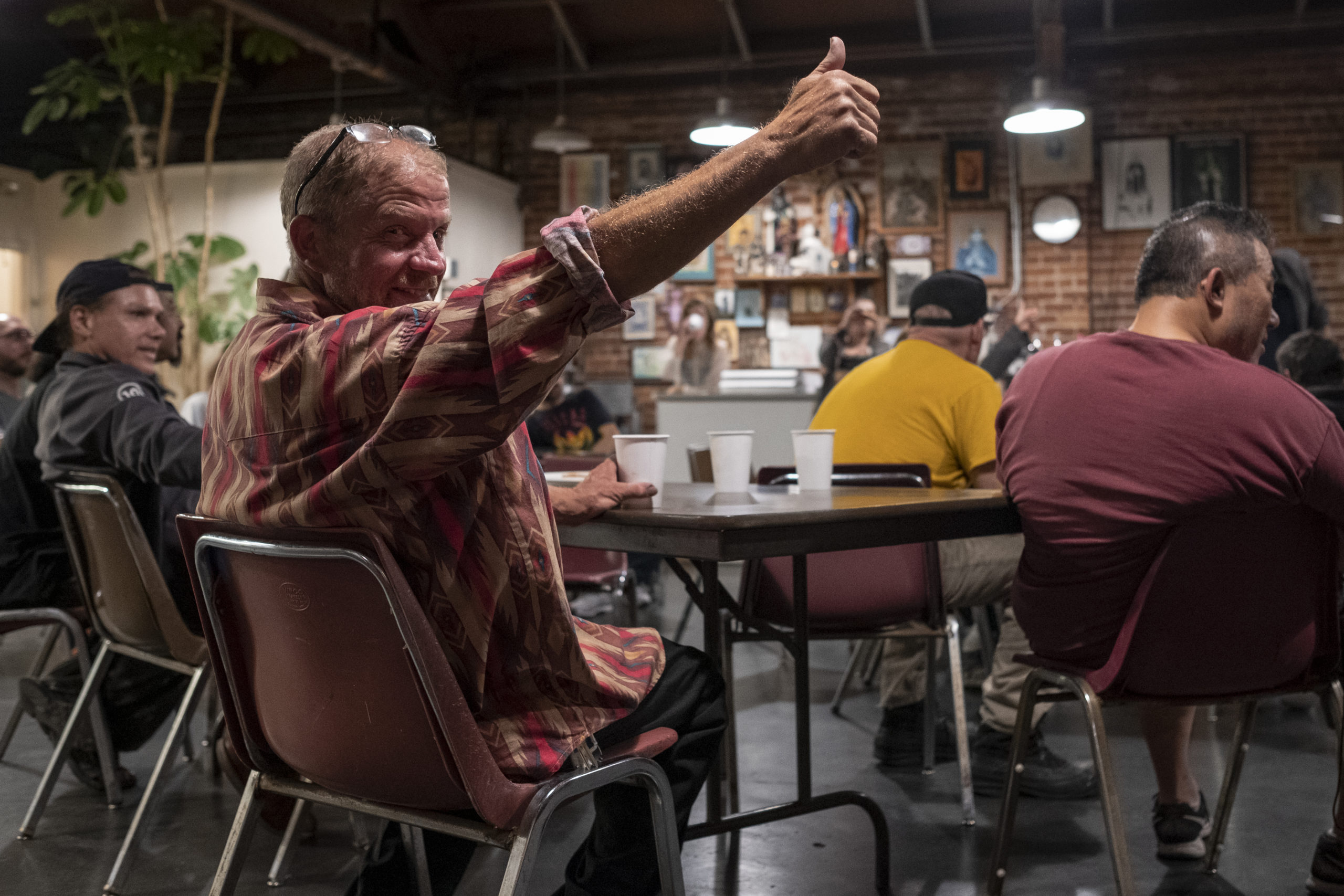
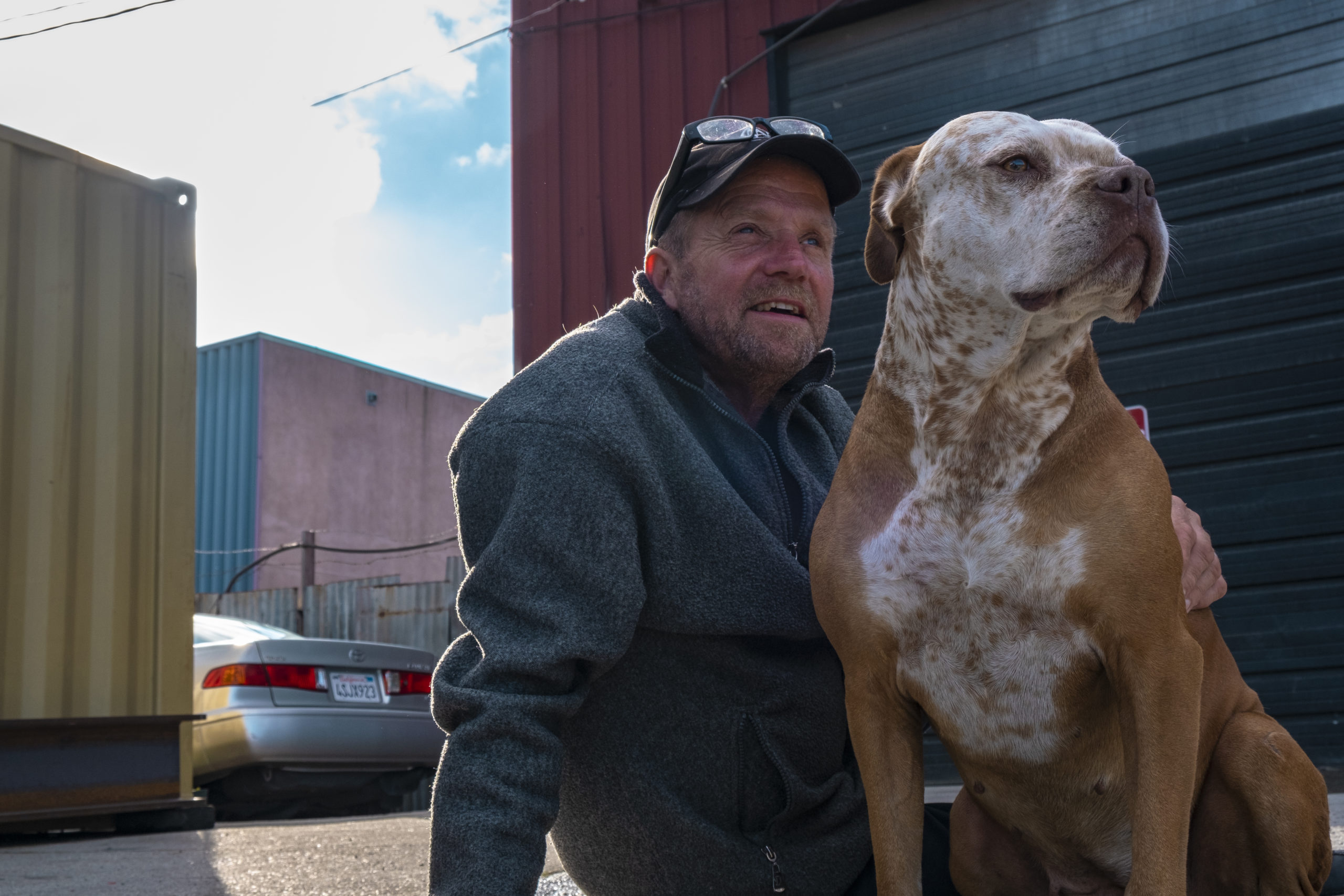
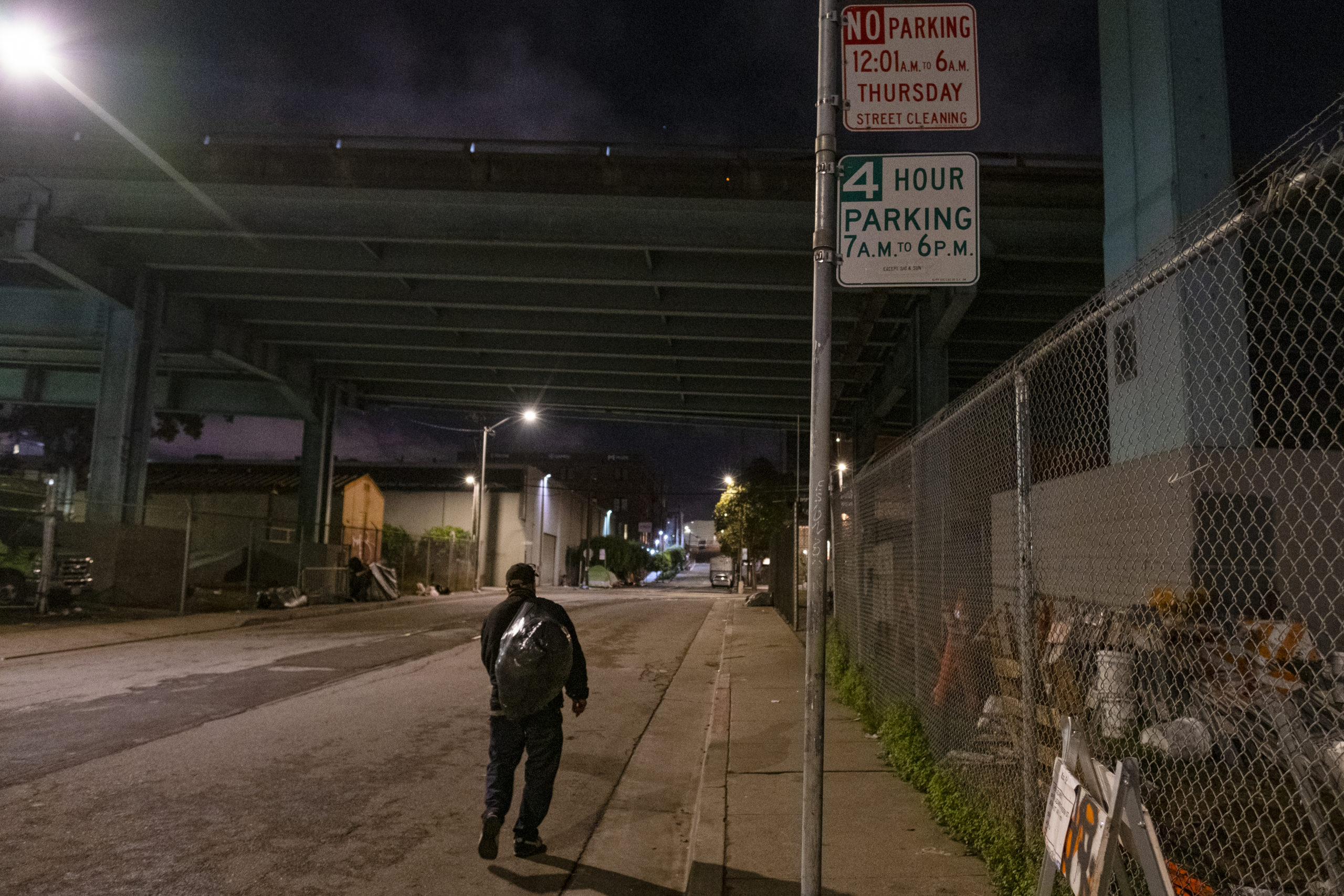
Explore images by clicking through the viewer above, or see the entire photo essay here on a single page.
Tantay Tolbert tore a yellow parking notice off the recreational vehicle where she lived. The warning gave her 72 hours to move or be towed.
Tolbert, 38, said the deeper meaning was unmistakable and personal: “We don’t want you here.”
But her vehicle would not start that December morning. She called her partner, who soon arrived and hopped into a second RV parked behind hers. The heavy-duty engine roared.
“Okay, I’m ready!” Tolbert yelled out the door, hands on the cold steering wheel. The second RV smacked against Tolbert’s bumper and pushed her away from the curb into the open street. Conjoined, the two vehicles turned the corner at Hawes Street and Thomas Avenue in the Bayview-Hunters Point neighborhood, searching for another parking spot around the block.
It was a game of musical chairs, and she was sick of it.
In San Francisco, stringent and widespread parking restrictions are a fact of life. But to the hundreds of city residents who live in their vehicles, these regulations can also be an obstacle to maintaining stability and getting off the streets. Vehicle dwellers play cat-and-mouse with the government’s enforcement apparatus, violating local laws to survive outdoors.
San Francisco has seen an increase in the number of vehicles used as homes. City staff this January counted 814, up from 432 in October 2018. Separate biennial counts of the city’s homeless population have tracked a rise in people living in vehicles since 2015, when 13% of people tallied by one method were living in vehicles. In 2017, that portion of the population increased to 28%, and in 2019, vehicle dwellers represented 35% of San Francisco’s unhoused population.
RELATED:
Counting the City’s Homeless: A First-Hand Account From the Streets
In response to this trend, city supervisors last year approved the creation of a vehicle triage center, a parking lot near the Balboa Park BART station where people living in vehicles could legally park while service providers helped them obtain long-term housing. In February, the site contained 26 vehicles housing 35 people, according to documents provided by the Department of Homelessness and Supportive Housing, meaning that the center accommodated only 3% of the vehicle homes tallied citywide a month earlier.
After pausing efforts to fill available spaces due to pandemic concerns, the city began allowing new residents to join the vehicle triage center in July, said a spokesman from San Francisco’s Joint Information Center, which has served as a clearinghouse for official responses since Mayor London Breed ordered residents to shelter in place in mid-March. By the end of July, the vehicle triage center was hosting 31 people living in 21 households. The city spokesman said that staff from the Department of Public Health visited the center in June to post more signs about COVID-19. Staff at the center administer daily health screenings and temperature checks for residents, and communal areas and “high-touch spaces” are cleaned every shift, he said.
Vehicle dwellers without spots in the sanctioned lot must find ways to survive and navigate numerous regulations on their own.
In 2012, the Board of Supervisors passed one such piece of legislation banning large vehicles — including RVs, camper trailers, fifth wheel campers, house cars and mobile homes — from parking between midnight and 6 a.m. on streets that the Municipal Transportation Agency specifies with signage. Violating this ordinance brings a $110 fine.
Furthermore, it is a misdemeanor to use an RV or other large vehicle for habitation in the city between 10 p.m. and 6 a.m. That restriction also applies to smaller vehicles in residential areas. Violators face a maximum fine of $1,000 and up to six months in jail.
It is also illegal to park any vehicle in the same public location for more than 72 hours. Violators can be fined $110 and their vehicles towed under certain conditions, such as when a registration lapses or a vehicle is inoperable or obstructing traffic.
Relief in a home on wheels
Before she began grappling with these laws as an RV resident, Tolbert lived in low-income housing through a city program at the Knox SRO, a single-room-occupancy hotel in the South of Market neighborhood. There she could have overnight guests up to 15 times per month, which proved unworkable for Tolbert and her partner. She moved out and slept on her aunt’s couch for a few months while searching for other housing options, but they fought often, so she bought a recreational vehicle to make into her own home.
Suddenly, Tolbert had ample space and amenities for daily living: a kitchen, dining table, bathroom, shower, bedroom, closet and living room. All these rooms fit into a 34-foot-long RV, giving her 306 square feet of space — equivalent to a tiny studio apartment. She could easily keep two pit bulls for companionship and safety. While she worked, the dogs guarded her space.
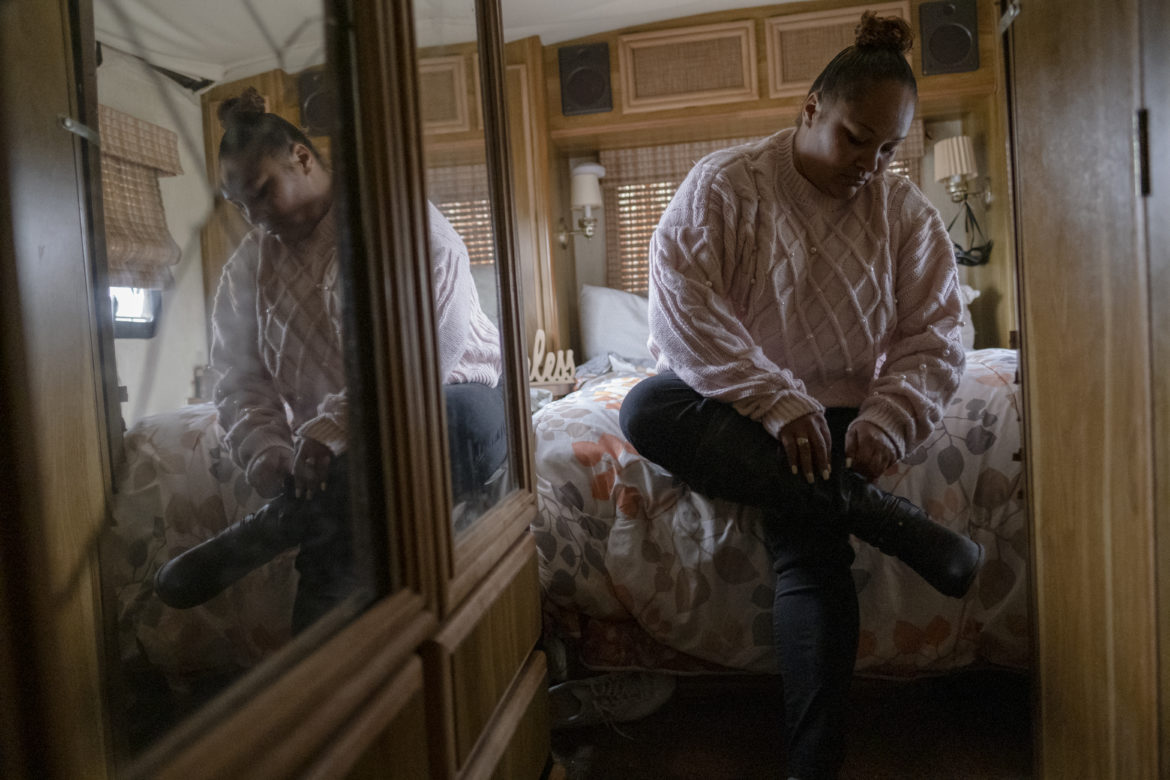
Yesica Prado / San Francisco Public Press and CatchLight Local
Tolbert gets dressed and does her curly hair for an afternoon work meeting. Tolbert says the RV “is a stepping stone because I want housing.” She is looking for a place costing no more than one-third of her income.The RV’s greatest perk was that it increased the stability of Tolbert’s life and reduced her stress. She had a permanent space where she could store, organize and protect her belongings, unlike other unsheltered residents who must move constantly, breaking down their tents or packing up bags. Her clothing, tools and possessions were within reach. She could prepare meals for the week, do laundry and make it on time to her weekend shifts cleaning BART station elevators through the public-service workforce nonprofit group Urban Alchemy.
But living in an RV also made her painfully visible, and attracted unwanted attention from nearby businesses and residents whose complaints drew parking enforcement.
Evading enforcement
Tolbert questioned why the city would outlaw living on the streets in a vehicle.
“We got smart enough to figure out — let’s live in one until we can get on our feet to get housing. You know what I mean? Are they mad because we got smart?” she said. “I don’t understand it.”
To avoid citations, Tolbert parked in a mostly industrial part of the city’s Bayview neighborhood, down the street from where she grew up. Tolbert said she liked the familiar surroundings, and foot traffic was lighter than in more commercially developed neighborhoods where people were likelier to report her presence.
She was one of many vehicle residents to draw these conclusions. In the city’s January count of vehicle homes, 45% were in District 10, which includes Bayview-Hunters Point, Bayview Heights, Silver Terrace, Visitacion Valley, Dogpatch and Potrero Hill.
Tolbert said that moving her RV in response to weekly complaints was taxing, because her vehicle was in disrepair, requiring her partner to push it into new parking spots until she could save enough money to fix her engine’s starter.
She could not afford professionally licensed mechanics, she said, so she generally relied on people who were self-taught.
“A street mechanic will charge you 75% less than any other shop,” she said. “For a $300 job, I pay $60.” But street mechanics tend to specialize, and she had yet to find someone with the needed expertise.
Locating parking spots was becoming harder, she said. In summer 2019, the city posted “No Parking Anytime” signs on the block where she usually settled — a long curb facing a park called North Shore Yosemite Slough, where residents walked their dogs along San Francisco Bay. Still, she continued to park there, waiting for police to ask her to move.
In November, Tolbert became interested in leaving the RV and obtaining housing. She was tired of the frequent moves and attention from police, and had learned that she was six weeks pregnant. She wanted to be a mother.
Tolbert said she applied to move into the city’s Vehicle Triage Center, and was selected.
But on moving day, program staff told her it was against the rules to have visitors, or to store belongings or use outdoor appliances including grills, or loud generators for powering microwaves or indoor heaters. At the last minute, Tolbert backed out. She did not want to be alone or give up her freedoms again. Tolbert remained in her RV in the Bayview while her partner applied for subsidized housing. She would wait to see if he would be selected, at which point they would move in together.
Emily Cohen, spokeswoman at the Department of Homelessness and Supportive Housing, said privacy laws prevented her from confirming whether Tolbert had gotten into the Vehicle Triage Center program. The triage center opened Dec. 11, at which time open flames were allowed in code-compliant RV stoves or grills in designated areas, according to rules that Cohen gave the Public Press. Occupants could have guests between 6 a.m. and 8 p.m. — no overnight stays.
Those rules changed in mid-March when San Francisco Mayor London Breed issued her order for residents to shelter in place, to slow the spread of the coronavirus. Guests were no longer allowed.
In mid-July, the recreational vehicles could be seen lined up about 8 feet apart from each other inside the lot along San Jose Avenue. Smaller vehicles were parked across from the RVs. Residents kept bikes, strollers and walkers outside their vehicle homes. Coronavirus poster guides hanging on the lot’s fence reminded people to wear masks, keep six feet apart and wash their hands. On this particular day, gray clouds covered the sky and fog hovered over the quiet lot, keeping residents inside their vehicles.
Learning to live in a vehicle
Because complaints drive enforcement of parking regulations, vehicle dwellers face a choice: They can inhabit relatively expansive and highly visible living quarters like Tolbert, or cram their lives into vans or sedans that are less likely to draw attention.
Gregory Nelson, 64, spent years trying to get by in a large vehicle. But he ultimately gave up, opting instead to blend into the urban landscape inside a sedan.
Nelson lost his housing following the 2008 Great Recession and a divorce. He bought a 36-foot RV — “The Chieftain,” as he called it — approximating the lifestyle he left behind. At the time, he worked at Larry’s Towing in the Mission Bay neighborhood, and his boss let him keep the RV on site without paying rent.
Despite that lucky break, it was a cumbersome situation.
Solar panels provided electricity only during daytime hours. It was expensive to use his engine to power appliances at night because his vehicle guzzled gasoline, so instead he had to use a generator. Far from a sewer connection, he periodically emptied his septic tank by making multiple trips to the office bathroom with a 5-gallon bucket.
“I wasn’t thrilled about it at all,” he said, recalling that period of his life.
It did not last. Nelson’s vision gradually deteriorated, forcing him into early retirement in 2019. When he lost his job, he lost ready access to the yard too.
Rather than navigate the restrictions on large vehicles in San Francisco’s public spaces, Nelson sold his RV for a brown 1986 Cadillac — the fifth Cadillac he’d ever owned, and the first that he would live in.
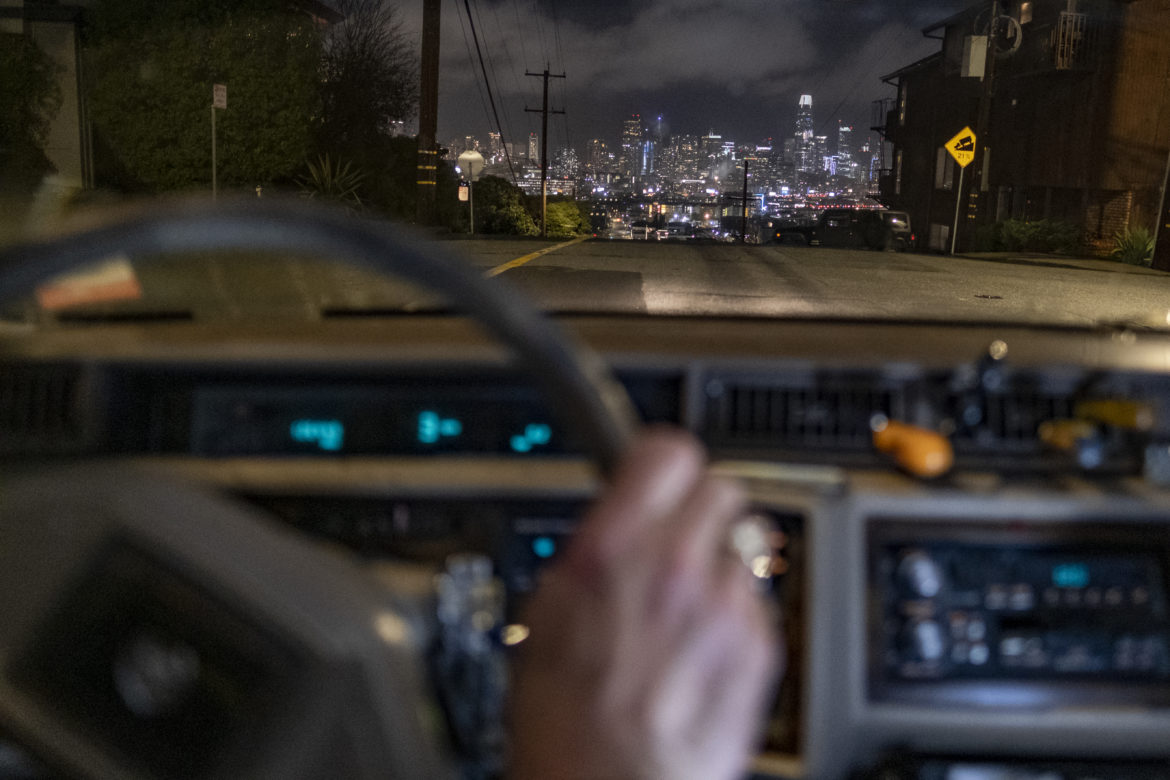
Yesica Prado / San Francisco Public Press and CatchLight Local
Nelson drives down the hill to the tow yard on a Saturday night to prepare for laundry and other chores over the weekend. Every time he moves, he needs to jump-start the Cadillac because bad wiring drains the battery. Sometimes he jumps the Cadillac with his own Lyft car.Camouflaged in a sedan
On a chilly December evening, Nelson breathed heavily and wiped the sweat off his forehead as he reached the top of a hill. A few more steep blocks stood between him and where his car was parked. On this night, he would sleep in the relatively safe and quiet corner of Potrero Hill.
At his age, the daily climbs were a physical challenge, but they were worth it because of the neighborhood’s light parking restrictions. He could easily avoid fines, moving his car once each week to stay a step ahead of street cleaning.
Nelson’s car did not stand out, and he only returned to it at night to relax. This allowed him to remain incognito. As far as he could tell, he was often the only person on the block who lived in a car. That was a good thing, he said, because groups of “the riff raff” — what he called other vehicle dwellers — tended to attract complaints, police and thieves.
READ MORE:
Coronavirus Resource Guide for Vehicle Dwellers in San Francisco and Berkeley
The car’s low profile was convenient, but its compact dimensions were not. He had little space for personal effects.
“You don’t have a closet full of clothes, or nice clothes,” Nelson said. “You have stuff that gets raggedy. Having nice clean shoes is difficult.”
For months, other basic aspects of survival were also a challenge. Still too young to collect Social Security, Nelson tried to live off the income from odd jobs, but it was not enough. Food became prohibitive. And he faced another problem: without his own bathroom, relieving himself became a chore.
He began a daily routine of leaving his car parked in Potrero Hill and walking back and forth between the towing company, where his former colleagues let him use the bathroom, and various service providers that offered free meals but were scattered throughout different neighborhoods. St. Anthony’s Dining Room was a 45-minute walk with a net change in elevation of about 160 feet, which was difficult on his body. The walk to Martin de Porres House of Hospitality was shorter, at 20 minutes, but steeper.
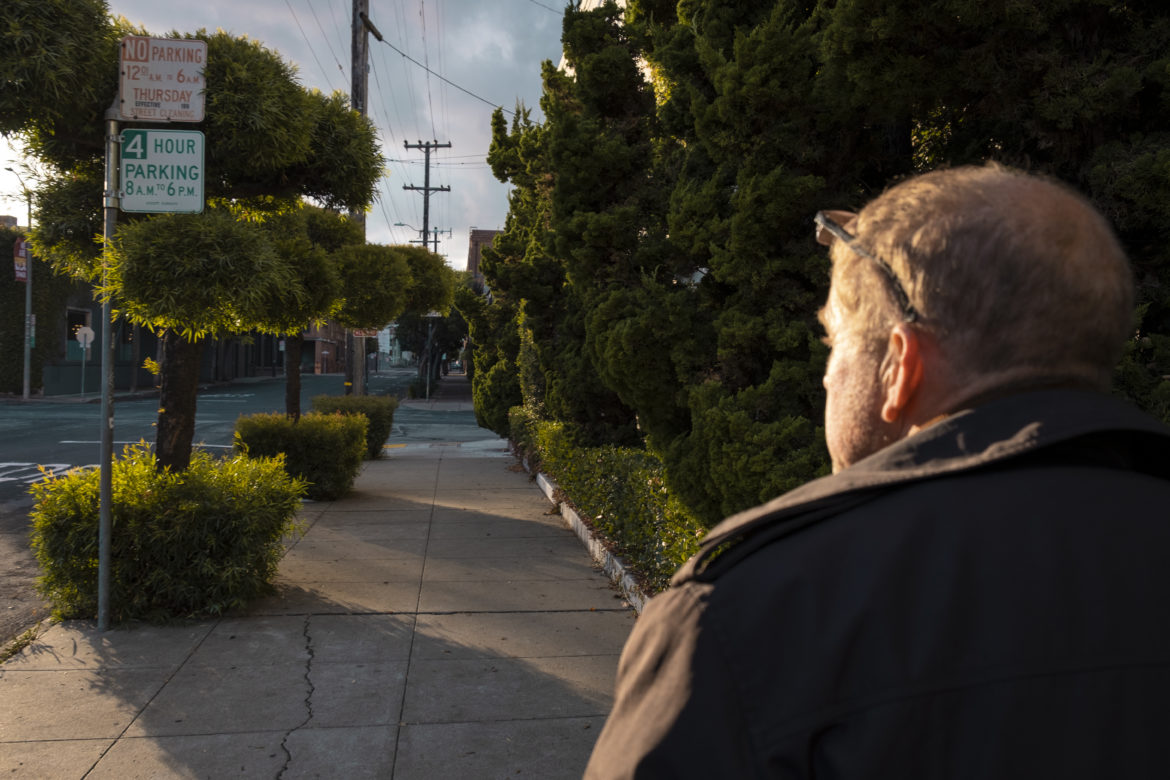
Yesica Prado / San Francisco Public Press and CatchLight Local
Nelson plays a cat-and-mouse game with the government’s enforcement apparatus, as well as with businesses and housed residents, trying to avoid drawing attention while quietly evading local regulations to survive.His favorite option, Potrero Hill Neighborhood House, was a 25-minute hike, and about 300 feet above the tow yard. In addition to meals, the Neighborhood House offered other resources weekly, but they were limited, so Nelson made sure to arrive on time.
“They only serve 30 people, and they have free groceries every Wednesday,” Nelson said. “Most of them are perishables, so there’s not much I can do with them. It’s geared more towards families. You can walk away with pounds of stuff. Eggs, milk, they load you up. They give you as many carrots as you can carry, a sack of potatoes, watermelon, a dozen pears, a bunch of food.”
Nelson tended to share his haul with a friend who brought the food back to his family so it would not go to waste. Nelson himself held onto a few perishables because now, without a fridge, he generally had to eat them within two days.
“You can give me a quart of milk and I’ll knock that out before it goes bad,” Nelson said. “They gave me a whole chicken last week. It was still frozen. I left it in the car until the next night — then it wasn’t frozen anymore. Going by the book, you don’t eat a chicken that sat in your car for a day. But of course, I did.”
Nelson had limited ability to prepare food. He used his Nu Wave pan — the novelty gadget was energy efficient and little of its surface got hot, handy for street cooking. “There’s no fire. There’s no hot glowing stuff. Temperature control and timer.”
The pan was one of his life’s little pleasures, he said. “I love my Nu Wave.”
A new equilibrium — and then COVID-19
In late 2019, Nelson’s life in the sedan became much easier when a friend loaned him money to rent another vehicle from CarMax to drive for Lyft and earn income working for the ride-hailing platform.
Nelson already had the gasoline he needed to get started stored in his old RV’s giant tank like savings in a bank account. “I got 100 gallons in it because I didn’t know when I would need it to drive it away,” he said. By siphoning gas from the RV tank into the rented car, he saved more of the money he was making as a Lyft driver.
At about 20 work hours per week, he could pay for the rental car and use his remaining earnings for living expenses. It was no longer such a struggle to afford food or pay for other essentials like car insurance.
When Nelson wasn’t driving for hire, he used the rental car for transportation while his possessions remained in the Cadillac.
“So the Lyft thing is kind of perfect,” he said, even though he was not earning enough to save up for future housing. But it gave him greater control over daily logistics, which boosted his self-esteem.
Then the world lurched, upending Nelson’s newfound stability.
As the COVID-19 pandemic took hold in mid-March, San Francisco Mayor London Breed issued a health order for the city’s residents to shelter in place and leave home for only crucial errands or exercise. “Nonessential” businesses such as bars were ordered to close, and restaurants could only prepare food for takeout.
Suddenly, few walked on the streets or socialized in public. Nelson’s ridership drastically fell. He could no longer afford the vehicle rental fees or gasoline to retain his gig economy job. For now, he’s back to his old Cadillac life.
Noah Arroyo contributed reporting to this story.
This story is part of “Driving Home: Surviving the Housing Crisis” and was produced in collaboration with the Bay Area visual storytelling nonprofit CatchLight through its CatchLight Local Initiative. As a CatchLight Local Fellow at the San Francisco Public Press, Yesica Prado examined the culture of vehicle living in San Francisco and Berkeley. Her fellowship work has been featured by the Yerba Buena Center for the Arts and by the Artists Against an #Infodemic Campaign, which aims to improve access to locally relevant public health information. The CatchLight Local Initiative is funded by the Kresge Foundation, The GroundTruth Project, the Facebook Journalism Project, the Neda Nobari Foundation and the Lisa Stone Pritzker Family Foundation.
